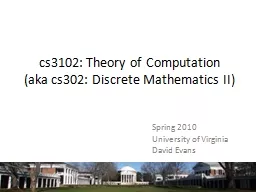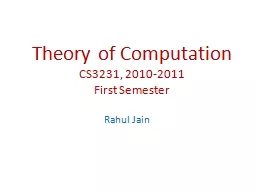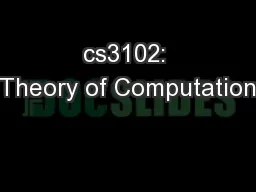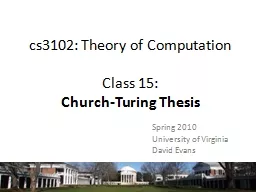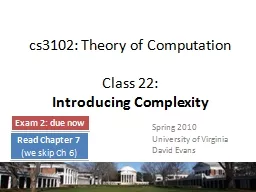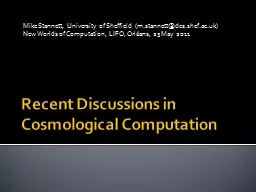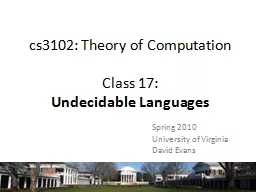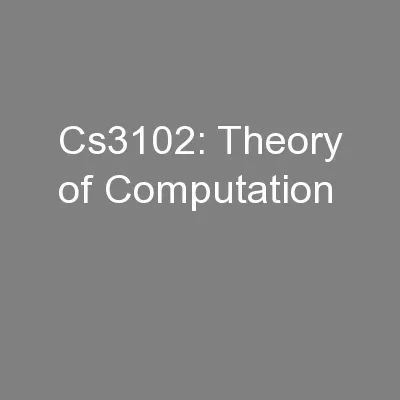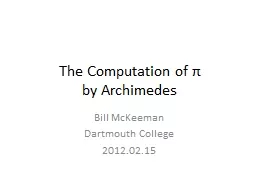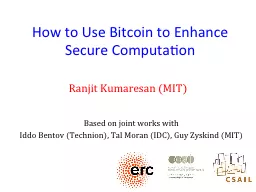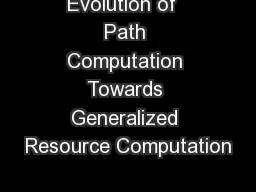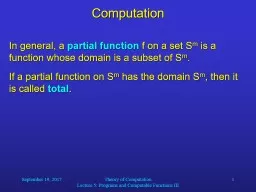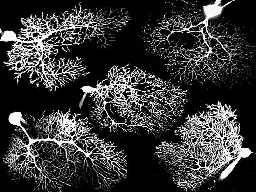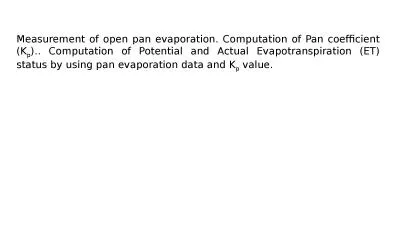PPT-cs3102: Theory of Computation
Author : yoshiko-marsland | Published Date : 2018-03-06
aka cs302 Discrete Mathematics II Spring 2010 University of Virginia David Evans Computation is what Computers do who needs theory flickr gastev cc Charles Babbages
Presentation Embed Code
Download Presentation
Download Presentation The PPT/PDF document "cs3102: Theory of Computation" is the property of its rightful owner. Permission is granted to download and print the materials on this website for personal, non-commercial use only, and to display it on your personal computer provided you do not modify the materials and that you retain all copyright notices contained in the materials. By downloading content from our website, you accept the terms of this agreement.
cs3102: Theory of Computation: Transcript
Download Rules Of Document
"cs3102: Theory of Computation"The content belongs to its owner. You may download and print it for personal use, without modification, and keep all copyright notices. By downloading, you agree to these terms.
Related Documents

